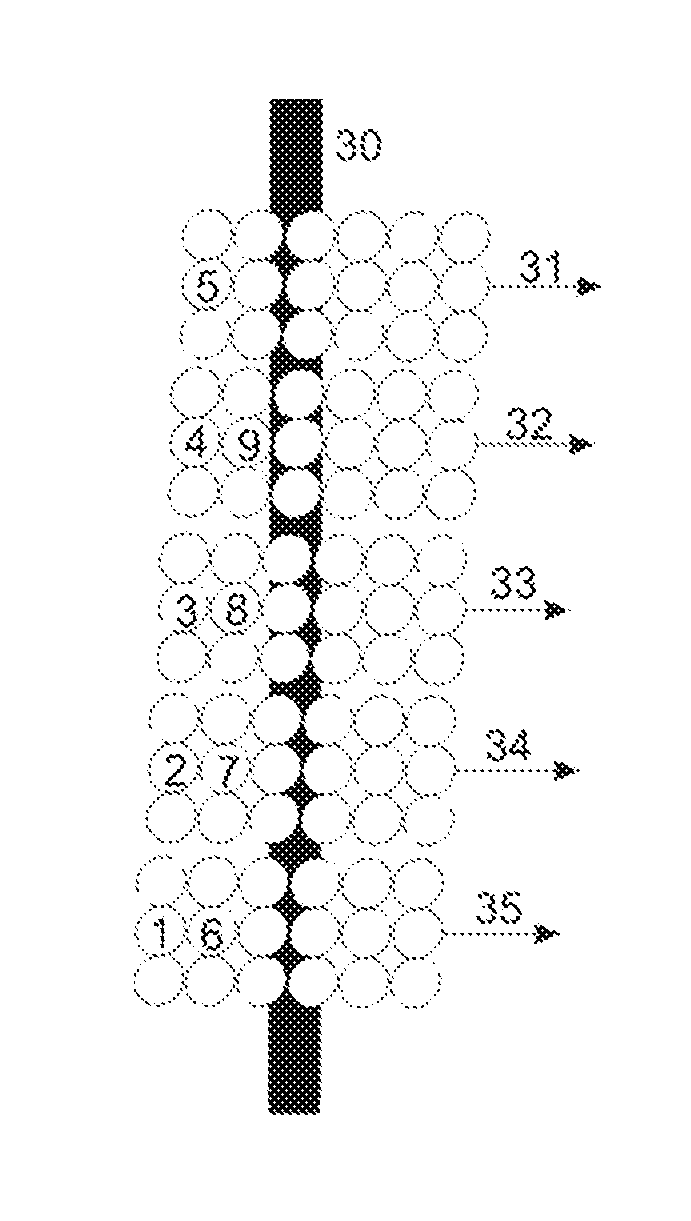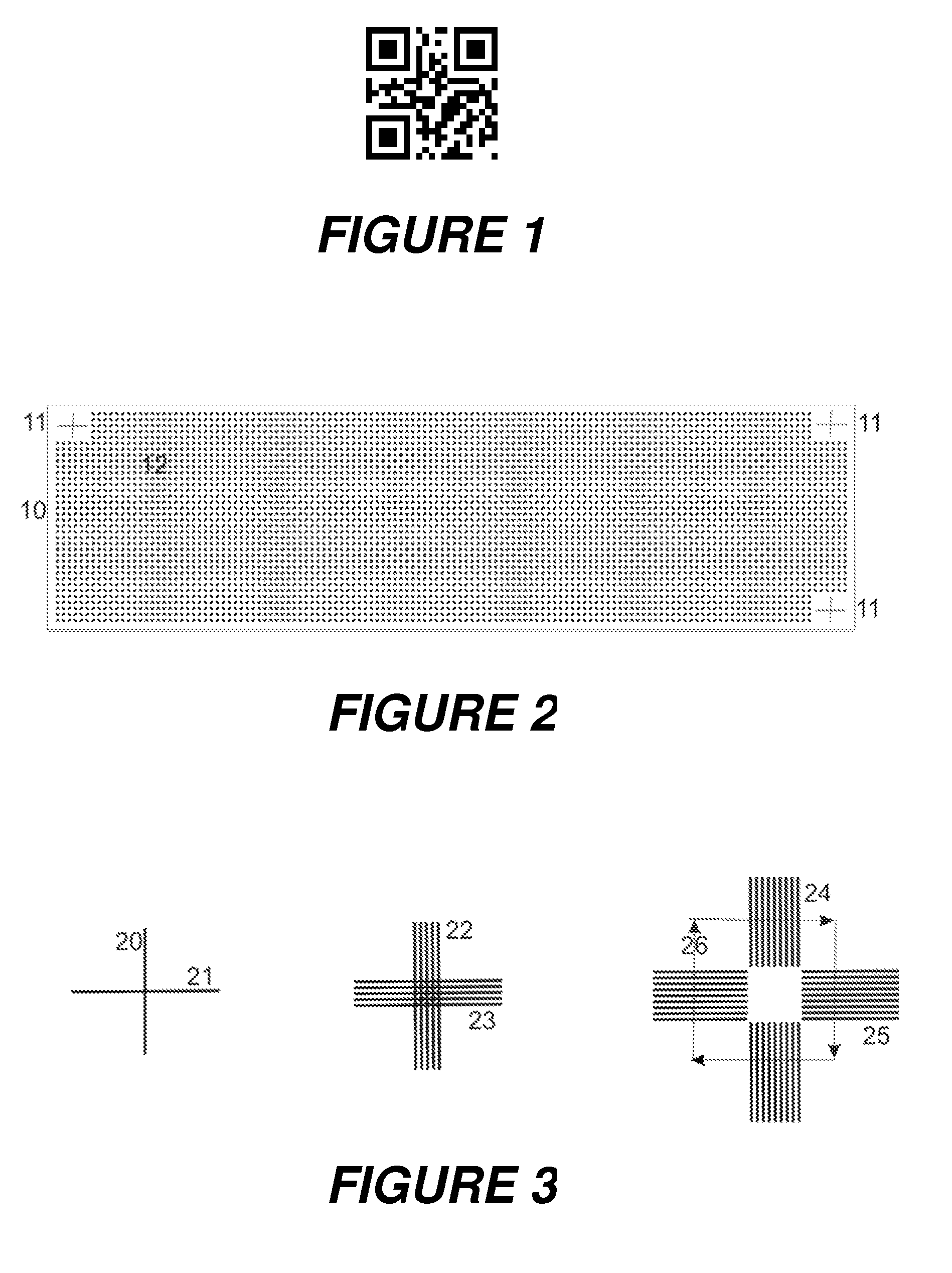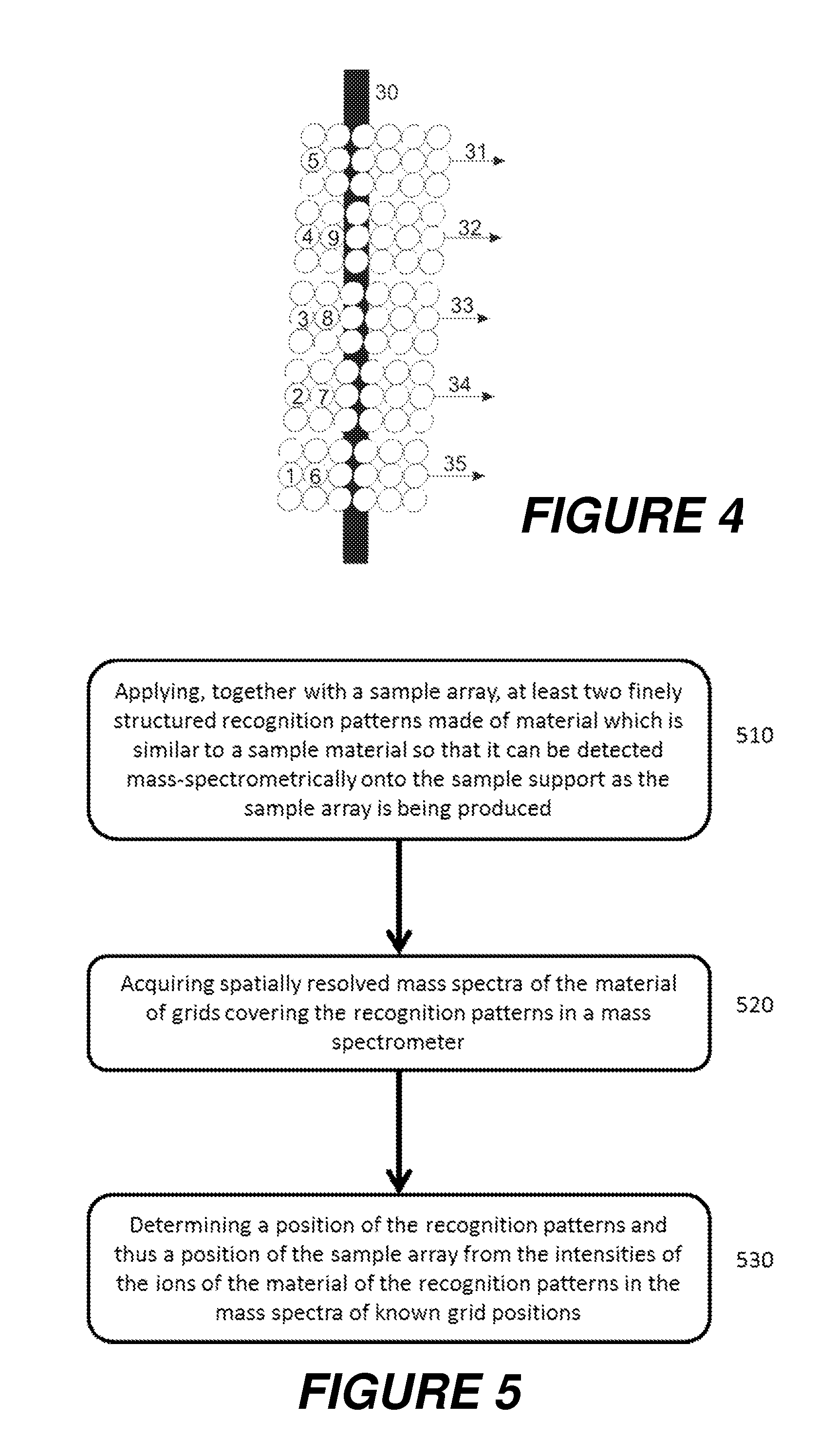High-throughput mass-spectrometric characterization of samples
a mass spectrometry and sample technology, applied in the field of samples characterization, can solve the problems of inability to develop, inability to reproduce the sample pattern with sufficient accuracy, and inability to recognize the monomolecular layers of samples by visual means, and achieves high sensitivity, high positional accuracy, and easy detection and measurement
- Summary
- Abstract
- Description
- Claims
- Application Information
AI Technical Summary
Benefits of technology
Problems solved by technology
Method used
Image
Examples
Embodiment Construction
[0020]While the invention has been shown and described with reference to a number of embodiments thereof, it will be recognized by those skilled in the art that various changes in form and detail may be made herein without departing from the spirit and scope of the invention as defined by the appended claims.
[0021]The mechanical tolerances in the holders of the sample supports mean that the position of the sample pattern cannot be reproduced with sufficient accuracy when the sample supports are moved from the laboratory robot, which produces and applies the samples onto the array, to the characterizing measuring instrument. With many preparation methods it is not possible to recognize the sample positions by visual means. But for complete utilization of the sometimes tiny samples, which may have minute diameters of between 10 and 50 micrometers only, it is necessary that the positions of all the samples in the measuring instrument are known, ideally to within around one to two micro...
PUM
 Login to View More
Login to View More Abstract
Description
Claims
Application Information
 Login to View More
Login to View More - R&D
- Intellectual Property
- Life Sciences
- Materials
- Tech Scout
- Unparalleled Data Quality
- Higher Quality Content
- 60% Fewer Hallucinations
Browse by: Latest US Patents, China's latest patents, Technical Efficacy Thesaurus, Application Domain, Technology Topic, Popular Technical Reports.
© 2025 PatSnap. All rights reserved.Legal|Privacy policy|Modern Slavery Act Transparency Statement|Sitemap|About US| Contact US: help@patsnap.com



